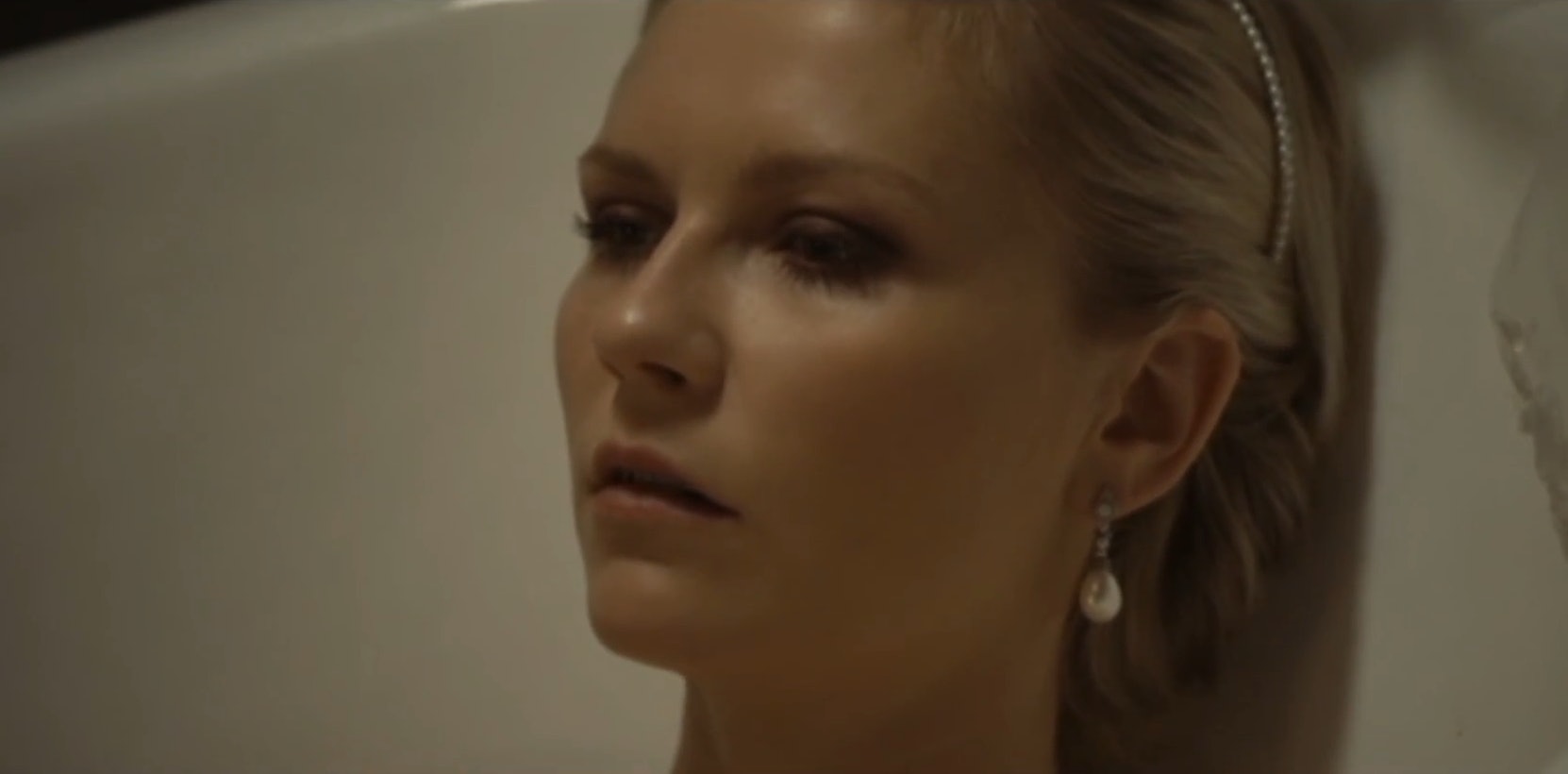
Melancholia is not a happy movie, in case the title isn’t enough of a giveaway. And that depressing tone is consistent throughout the film. However, it is, without a doubt, utterly beautiful, especially the imagery in the opening sequence.
Visuals of outer space are interspersed with images of the movie’s characters performing symbolic moments of what you’re about to see. It’s all scored to Wagner’s Tristan und Isolde (featured heavily through the film). Melancholia should go down in cinema history as having one of the most spectacular openings of all time. Merely describing the opening wouldn’t do it justice, so you should check out the video below.
The sequence ends with Earth slowly colliding with the planet Melancholia and gradually shattering into a billion pieces. The movie tells you what to expect: it’s not getting any better from here.
Melancholia then cuts to the wedding day of Justine (Kirsten Dunst) and Michael (Alexander Skarsgård). It’s apparent early on that Justine is suffering from depression.

While mental illness is incredibly nuanced and can never be attributed to just one thing, Justine is surrounded by the absolute worst people. Constantly being around these people would almost certainly cause mental illness.
Practically everyone acts terribly on the day of Justine’s wedding. Her father is an asshole, her mother can’t muster up even the most basic human kindness, and her rich brother-in-law openly whines about how much the wedding is costing him while antagonizing Justine. Even Justine’s boss is a guest, and he’s there just to harass Justine all night for a tagline for a new marketing campaign on her wedding day. Anytime Justine tries to talk to someone about her fears and anxieties, everyone dismisses her.

Justine’s sister Claire (Charlotte Gainsbourg) isn’t much help, either. Claire is hosting the wedding reception, and it’s obvious that she has a need for control. Claire constantly harangues Justine to just “be happy.”
Where Justine questions societal norms, Claire clings to them like an anchor. By the end of the first half, Justine’s day-old marriage has collapsed, she has fallen into an even deeper depression, and the rogue planet Melancholia is just on the horizon.

After the events of the wedding, Justine has been rendered almost catatonic by her depression with Claire caring for her. But as Melancholia approaches Earth, the sisters’ roles start to slowly reverse. The closer the planet gets, the more Justine starts to improve, and the more fearful and anxiety-ridden Claire becomes.

Although Claire’s husband insists that the planet will simply fly by Earth, Claire is still nervous. And the longer it goes on, the more palpable her fear.
At first, it looks like Melancholia has passed over, much to Claire’s great relief — but to the audience, it’s clear that something isn’t quite right. And it isn’t. Earth’s gravitational pull is bringing Melancholia back towards it. Collision is unavoidable.

Claire finds her husband dead from a deliberate overdose, and while she tries to flee with her son, she soon realizes that she’s helpless to stop the inevitable.
The only one who completely accepts their fate is Justine, who now has to help her terrified sister face the end of the world. Where Justine could not cope with living, Claire struggles to cope with impending doom.
Melancholia is a very different kind of apocalypse film. For one thing, it’s a very quiet movie. Although the planet’s destruction is on the horizon, there is very little noise. No CNN broadcasts or talking heads blabbering in the background. No political meetings in a bunker under the White House.
Without all this background noise, there’s more time and space for the characters (and by extension, the audience) to contemplate the inevitable end. As bleak as this film is, there’s something almost enviable about Justine’s sense of peace as she welcomes annihilation.

Director Lars von Trier wrote Melancholia while in the midst of depression, and he couldn’t have picked a better actress for the role of Justine than Kirsten Dunst. Having checked herself into rehab for depression just a few years prior to filming, Dunst knows how to accurately portray mental illness to a tee.
Again, you’re not likely to find anything uplifting about Melancholia, and you’re probably going to have to be in a particular mood to watch it, but it is a visual masterpiece, which definitely makes it worth watching. It is most certainly a tragedy, but it is a beautiful, spectacularly tragic work of art.







